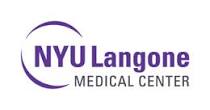The Capillary Index Score Trial
| Status: | Enrolling by invitation |
|---|---|
| Conditions: | Peripheral Vascular Disease, Neurology |
| Therapuetic Areas: | Cardiology / Vascular Diseases, Neurology |
| Healthy: | No |
| Age Range: | 18 - Any |
| Updated: | 8/11/2017 |
| Start Date: | March 2016 |
| End Date: | September 2018 |
The Capillary Index Score Trial: Phase I
This study seeks to investigate the capillary index score (CIS) to further improve patient
selection of endovascular treatment (EVT) in acute ischemic stroke (AIS).
The hypothesis or idea being tested:
Patients with favorable CIS who are successfully revascularized with EVT can have successful
outcomes with an extended time window for treatment.
selection of endovascular treatment (EVT) in acute ischemic stroke (AIS).
The hypothesis or idea being tested:
Patients with favorable CIS who are successfully revascularized with EVT can have successful
outcomes with an extended time window for treatment.
This study is trying to look at how the well-being of the patient following treatment is
influenced by peripheral blood supply (collateral flow) to the area lacking primary blood
flow due to the clot. Treatment of AIS includes EVT and medical treatment. EVT is typically
not offered to patients after 6 hours of the onset of symptoms. The current study is based on
the belief that patients can be successfully treated with the EVT up to 8 hours, as long as
they have good peripheral blood flow (collateral flow) to the area of tissue blocked of the
primary blood supply.
The study will evaluate the ability of the capillar index score (CIS) to identify patients
who can be successfully treated with EVT. The CIS quantifies blood supply to the ischemic
area from peripheral vessels (collateral flow) based on diagnostic cerebral angiogram.
Patients are graded on a scale from 0-3, with 0 and 1 considered a poor CIS (pCIS) and 2 and
3 considered a favorable CIS (fCIS). All patients will be treated with EVT and medical
treatment consistent with national guidelines.
The primary endpoint is the clinical outcome at 90 days between fCIS group versus pCIS group.
The secondary endpoint is the influence of successful revascularization on outcomes for
patients with fCIS or pCIS.
influenced by peripheral blood supply (collateral flow) to the area lacking primary blood
flow due to the clot. Treatment of AIS includes EVT and medical treatment. EVT is typically
not offered to patients after 6 hours of the onset of symptoms. The current study is based on
the belief that patients can be successfully treated with the EVT up to 8 hours, as long as
they have good peripheral blood flow (collateral flow) to the area of tissue blocked of the
primary blood supply.
The study will evaluate the ability of the capillar index score (CIS) to identify patients
who can be successfully treated with EVT. The CIS quantifies blood supply to the ischemic
area from peripheral vessels (collateral flow) based on diagnostic cerebral angiogram.
Patients are graded on a scale from 0-3, with 0 and 1 considered a poor CIS (pCIS) and 2 and
3 considered a favorable CIS (fCIS). All patients will be treated with EVT and medical
treatment consistent with national guidelines.
The primary endpoint is the clinical outcome at 90 days between fCIS group versus pCIS group.
The secondary endpoint is the influence of successful revascularization on outcomes for
patients with fCIS or pCIS.
Inclusion Criteria:
1. Anterior circulation acute ischemic stroke due to blockage of the intracranial
internal carotid artery or middle cerebral artery (M1)
2. Within 8 hours of onset of symptoms
3. NIHSS Score is 8 or greater
Exclusion Criteria:
1. Contra-indication for IAT found on initial CT
2. Intracranial hemorrhage
3. Stroke mimics (tumor, herpetic encephalitis, etc.)
4. More than 1/3 hypodensity on non-enhanced head CT prior to intervention
5. ASPECT Score less than 6
6. Pre-existing disability defined as mRS more than 2
7. Pregnant women
We found this trial at
5
sites
New York University Langone Medical Center NYU NYU Langone Medical Center, a world-class, patient-centered, integrated,...
Click here to add this to my saved trials
Akron General Medical Center It
Click here to add this to my saved trials
Click here to add this to my saved trials
Click here to add this to my saved trials
Click here to add this to my saved trials

